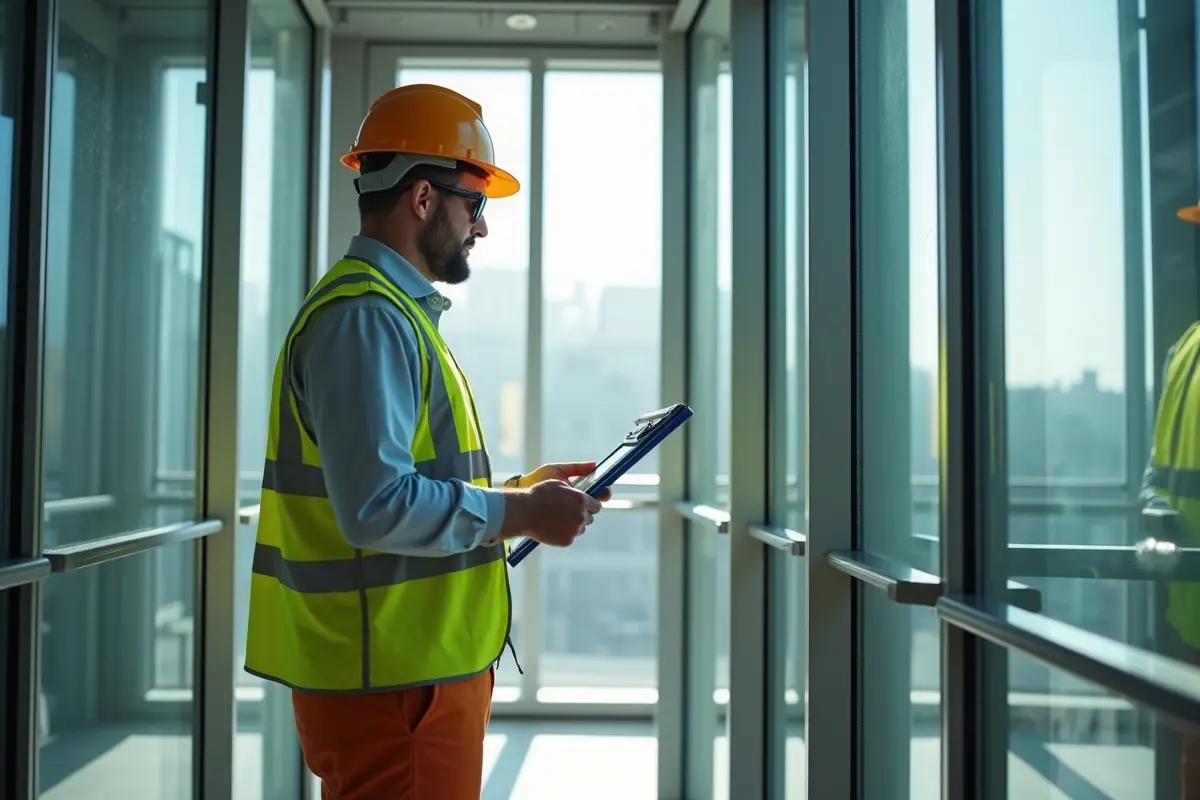There’s something magical about a glass lift travelling seamlessly up the side of a building or through an open atrium. That transparency fosters this floating effect and makes the entire apparatus appear almost supernatural; however, nothing could be further from the truth. In fact, the engineering behind glass lifts is complex, and forces operate in ways that differ completely from their enclosed counterparts to achieve both safety and that stunning aesthetic appeal. It’s not as simple as assembling some panels and making sure the engine works.
From weight distribution to wind loads and light travel, the impossible-seeming feat does mean that certain considerations don’t get overlooked, but are handled in ways that create astonishing features through an entirely different application process.
Contents
The Invisible Framework
Ironically, the most crucial components of glass lifts are the ones designed to be as invisible as possible. Glass is heavy but so are the loads associated with the glass lift car and people inside; therefore, the frame systems meant to uphold them need to be inconspicuous but also rigid enough to support considerable weight.
For example, companies that create glass lifts use high-grade steel or aluminum frames to support significant loads. These are not standard compounds and profiles; instead, they need limited tolerances. Any flex in the frame means excessive stress on the glass. Load paths need accurate determination since every operation generates forces moving through systems – engineers must understand where forces start and finish throughout movement patterns. Every connection point matters; a subpar joint could derail everything.
It’s also important for mounting points, which connect the lift to the building – to support vertical and lateral loading; when a glass lift moves quickly in one direction or another, it pushes forces into the mounting system and building structure. In particular, this is true in retrofitting operations where existing structures need to be made strong enough to support loads for which they were never designed.
Glass Gets Designed for Load and Visibility
The glass that gets used for these operations is nothing like what you find in windows. Companies that specialize in glass lifts use laminated safety glass made of multiple layers, bonded together. If one layer cracks due to stress, the others hold. Even the lamination process requires adequate pressure and heated bonding, without distortion.
Glass thickness becomes an issue for engineers, too. 10-12mm is typical for standardized installations but high-traffic commercial glass lifts get installed with much thicker material. This presents a challenge across an entire design because each millimeter adds weight – heavier glass requires stronger framing, more powerful motors for operation and reinforced mounting connections.
The catch? Thicker glass looks bad and ruins the purpose of a glass lift in the first place if it goes overboard. There’s no benefit to impossible transparency. Thus, engineers must find a balance between structural integrity and aesthetic appeal. Sometimes it’s resolved through different locations requiring different thicknesses, a higher-stressed area may need thicker glass while an area with less weight might suffice with thinner glass.
Safe and Sound Systems that Work Behind the Scenes
Where traditional lifts hide their systems behind wooden or metal panels to keep passengers safe, glass lifts require everything to work invisibly without compromising transparent beauty. Emergency brakes come standard, but they’re built into guide rails and structural components so they don’t impede vision.
Cable systems, although hydraulic systems can power certain lifts, require redundancy; most glass lifts have multiple cables with each having capability of holding the full load alone; if one fails, others compensate without anyone knowing immediately. Monitoring systems assess cable operation constantly and allow emergency responses before serious incidents transpire.
Door systems create engineering challenges all their own, where a traditional door does not have an issue sealing shut for passenger safety, glass lift doors need frameless options with magnetic or mechanical edge seals to stay shut without improper bulking or improper sightlines. Motors that operate these systems are smaller than traditional options so they’re quieter and less invasive.
Taking Environmental Factors into Consideration
Glass lifts experience more wind loading than most traditional counterparts, which is expected in elevated areas or on exteriors as they’d operate like sails based on wind movement. Thus, engineers also model wind patterns around buildings and determine worst-case scenarios in different climates.
Temperatures change conditions for good, too. Different mediums expand at various rates; if engineers don’t incorporate necessary allowances for thermal movements, they’ll crack either glass or metal components. The mounting systems must include expansion joints and flexible connections that allow these thermal cycles to happen without deterioration.
Moisture issues can also rear their head if not properly considered. Temperature differences can create condensation on interior glazing or worse, the seal systems that operate within that no one can see. Humidity control through proper ventilation designs, or active systems, is crucial.
Installation Isn’t an Afterthought
Glass lifts require critical installation sequencing that’s impossible to play by ear on-site. Typically, the structural system goes in first, it’s bolted together to a building structure so precisely that tolerances are almost non-existent, which spans multiple floors at a time and requires millimeter clearance.
Once mechanical systems are in place and tested, while protecting the panels during heavy installation, it’s time to install glass panels. Lift shafts are usually closed off after operation, meaning less access to error adjustments but increases access challenges should any errors of omission occur by installation professionals.
Site conditions dictate everything from installation accessibility inside new construction or retrofitting existing structures where steel support needs verification and reinforcement; just because there was a brilliant design notion doesn’t mean it’s easily executed if structural support isn’t available.
Paying for the Complexity of Glass Lifts
The complexity of what drives glass lift engineering means that it costs more than traditional lifts, and rightly so, but from a revenue standpoint, you’re getting something that will change how tenants appreciate vertical space. Buildings report enhanced tenant satisfaction if they’ve installed new ones and often boast premium rents because they’ve invested in something so aesthetically stunning.
Natural light flows through where traditional lifts would block it. Security improves when you can see into a lift from certain distances but maintenance crews can visualize aspects of the interior without having to deconstruct everything.
From a construction standpoint, the engineering precision that goes into all aspects of a glass lift means that they’ve increased overall building quality constructions because tolerances set up elsewhere become more evident when people try to cut corners along other interior systems.
Since limited tolerances are required in one sector, it makes attention-to-detail easier to follow in general trims.
The impressive visual alone gives credit to the engineering mastery that’s behind it; every time someone rides safely and consistently, every movement occurs because hundreds of calculations were made over time between incredibly intentional decisions worked out perfectly, and that’s something few people think about behind their ride magic.


